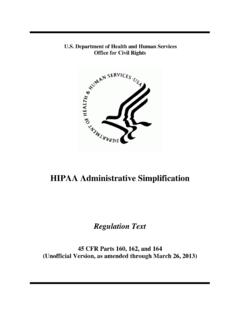Transcription of 2019 Instructions for Form 940 - IRS tax forms
1 Userid: CPMS chema: instrxLeadpct: 100%Pt. size: 10 Draft Ok to PrintAH XSL/XMLF ileid: .. tions/I940/2019/A/XML/Cycle06/source(Ini t. & Date) _____Page 1 of 15 7:40 - 19-Nov-2019 The type and rule above prints on all proofs including departmental reproduction proofs. MUST be removed before for form 940 Employer's Annual Federal Unemployment (FUTA) Tax ReturnDepartment of the TreasuryInternal Revenue ServiceSection references are to the Internal Revenue Code unless otherwise DevelopmentsFor the latest information about developments related to form 940 and its Instructions , such as legislation enacted after they were published, go to 's NewNew filing addresses.
2 The filing addresses have changed for some employers. See Where Do You File, later, before filing your reduction state. A state that hasn't repaid money it borrowed from the federal government to pay unemployment benefits is a credit reduction state. The Department of Labor determines these states. If an employer pays wages that are subject to the unemployment tax laws of a credit reduction state, that employer must pay additional federal unemployment tax when filing its form 2019, the Virgin Islands (USVI) is the only credit reduction state. If you paid any wages that are subject to the unemployment compensation laws of the USVI, your credit against federal unemployment tax will be reduced based on the credit reduction rate for the USVI.
3 Use Schedule A ( form 940) to figure the credit reduction. For more information, see the Schedule A ( form 940) Instructions or visit expense and bicycle commuting reimburse-ments are subject to FUTA tax. The Tax Cuts and Jobs Act ( 115-97) suspends the exclusion for qualified moving expense reimbursements from your employee's income under section 132 and the deduction from the employee's income under section 217, as well as the exclusion for qualified bicycle commuting reimbursements from your employee's income under section 132, beginning after 2017 and before 2026. Therefore, moving expense and bicycle commuting reimbursements aren't exempt from FUTA tax during this period.
4 Don't include moving expense or bicycle commuting reimbursements on form 940, line 4. For more information about fringe benefits, see Pub. program for professional employer or-ganizations (PEOs). The Stephen Beck, Jr., Achieving a Better Life Experience Act of 2014 required the IRS to establish a voluntary certification program for PEOs. PEOs handle various payroll administration and tax reporting responsibilities for their business clients and are typically paid a fee based on payroll costs. To become and remain certified under the certification program, certified professional employer organizations (CPEOs) must meet various requirements described in sections 3511 and 7705 and related published guidance.
5 Certification as a CPEO may affect the employment tax liabilities of both the CPEO and its customers. A CPEO is generally treated for employment tax purposes as the employer of any individual who performs services for a customer of the CPEO and is covered by a contract described in section 7705(e)(2) between the CPEO and the customer (CPEO contract), but only for wages and other compensation paid to the individual by the CPEO. To become a CPEO, the organization must apply through the IRS Online Registration System. For more information or to apply to become a CPEO, visit the IRS website at wages paid to a work site employee, a CPEO is eligible for the credit for state unemployment tax paid to a state unemployment fund, whether the CPEO or a customer of the CPEO made the contribution.
6 In addition, a CPEO is allowed the additional credit if the CPEO is permitted, under state law, to collect and remit contributions to the state unemployment fund with respect to a work site employee. For more information on the credit, see Credit for State Unemployment Tax Paid to a State Unemployment Fund, generally must file form 940 and Schedule R ( form 940), Allocation Schedule for aggregate form 940 Filers, electronically. For more information about a CPEO s requirement to file electronically, see Rev. Proc. 2017-14, 2017-3 426, available at # payroll duties. Generally, as an employer, you're responsible to ensure that tax returns are filed and deposits and payments are made, even if you contract with a third party to perform these acts.
7 You remain responsible if the third party fails to perform any required action. Before you choose to outsource any of your payroll and related tax duties (that is, withholding, reporting, and paying over social security, Medicare, FUTA, and income taxes) to a third-party payer, such as a payroll service provider or reporting agent, go to for helpful information on this topic. If a CPEO pays wages and other compensation to an individual performing services for you, and the services are covered by a contract described in section 7705(e)(2) between you and the CPEO (CPEO contract), then the CPEO is generally treated for employment tax purposes as the employer, but only for wages and other compensation paid to the individual by the CPEO.
8 However, with respect to certain employees covered by a CPEO contract, you may also be treated as an employer of the employees and, consequently, may also be liable for federal employment taxes imposed on wages and other compensation paid by the CPEO to such Nov 19, 2019 Cat. No. 13660 IPage 2 of 15 Fileid: .. tions/I940/2019/A/XML/Cycle06/source7:40 - 19-Nov-2019 The type and rule above prints on all proofs including departmental reproduction proofs. MUST be removed before For more information on the different types of third-party payer arrangements, see section 16 in Pub. form 940 filers. Agents and CPEOs must complete Schedule R ( form 940) when filing an aggregate form 940.
9 aggregate forms 940 are filed by agents of home care service recipients approved by the IRS under section 3504. To request approval to act as an agent for an employer, the agent files form 2678 with the IRS unless you re a state or local government agency acting as an agent under the special procedures provided in Rev. Proc. 2013-39, 2013-52 830, available at # forms 940 are also filed by CPEOs approved by the IRS under section 7705. CPEOs file form 8973, Certified Professional Employer Organization/Customer Reporting Agreement, to notify the IRS that they started or ended a service contract with a customer. CPEOs generally must file form 940 and Schedule R electronically.
10 For more information about a CPEO's requirement to file electronically, see Rev. Proc. 2017-14, 2017-3 426, available at # you change your business name, business ad-dress, or responsible party. Notify the IRS immediately if you change your business name, business address, or responsible party. Write to the IRS office where you file your returns (using the Without a payment address under Where Do You File, later) to notify the IRS of any business name change. See Pub. 1635 to see if you need to apply for a new employer identification number (EIN). Complete and mail form 8822-B to notify the IRS of a business address or responsible party change. Don t mail form 8822-B with your form 940.












